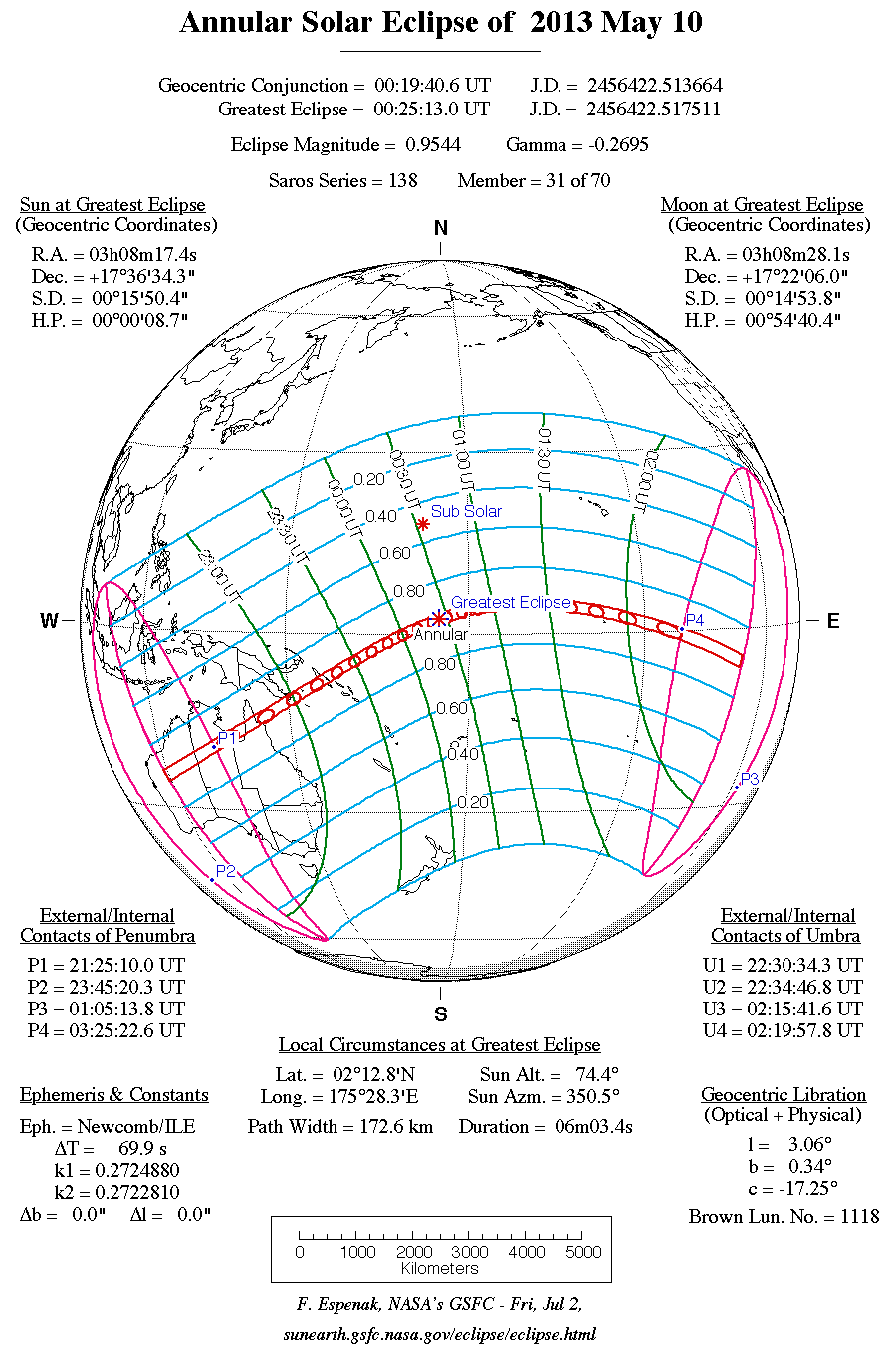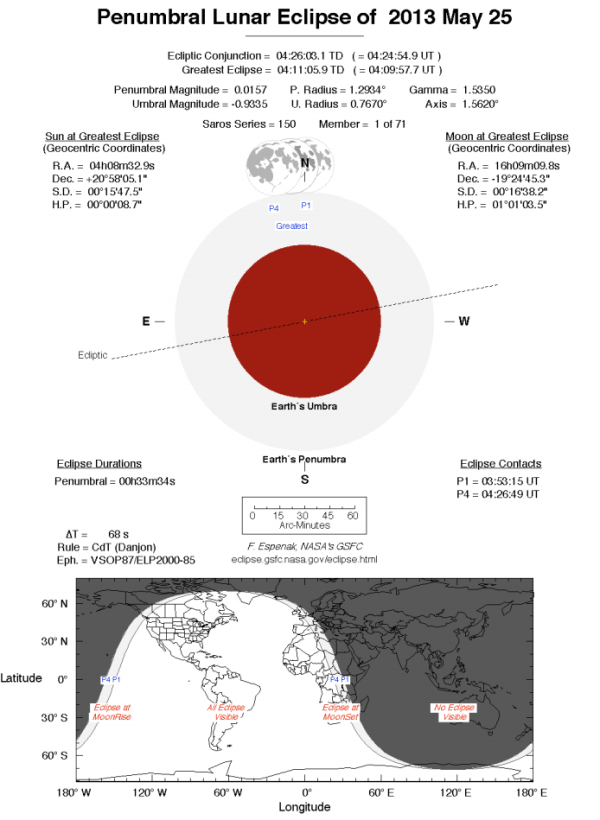Monthly Stargazing Calendar for May 2013
Looking for the May 2025 stargazing calendar?
Just like last month, this will be another very eventful month when it comes to astronomical events. There will be a meteor shower, two eclipses and a conjunction.
First of all, on the night of May 4 and 5 the Eta Aquarids meteor shower will peak. The Eta Aquarids is an above average shower, producing up to 60 meteors per hour at its peak. However, most of the activity is seen in the Southern Hemisphere. In the Northern Hemisphere, the rate can reach only about 30 meteors per hour. This meteor shower originates from the dust particles left behind by comet Halley, which has been known and observed since ancient times. The shower runs annually from April 19 to May 28. Unfortunately the second quarter moon will block out some of the less bright meteors this year but you should still be able to see most of them if you are viewing from a dark location. Meteors will appear to radiate from the constellation Aquarius, but can appear anywhere in the sky.

Would you like to be notified of stargazing events?
Then on May 10 there will be an annular solar eclipse. An annular solar eclipse occurs when the Moon is too far away from the Earth to completely cover the Sun which results in a ring of light around the darkened Moon. This means that the Sun’s corona will not be visible during an annular eclipse. The path of the eclipse will begin in western Australia and move east across the central Pacific Ocean. You can see the exact path as well as some additional information on the graphic below supplied by NASA.

On May 28 there will be a conjunction of Venus and Jupiter. Conjunctions are rare events where two or more celestial bodies will appear extremely close together in the night sky. The two bright planets will be within 1 degree of each other in the evening sky. The planet Mercury will also will also be visible nearby.
Finally, on May 25 the will be a penumbral lunar eclipse. A penumbral lunar eclipse occurs when the Moon passes through the Earth’s partial shadow, or penumbra, and the Moon will darken slightly but not completely. The eclipse will be visible throughout most of North America, South America, western Europe, and western Africa. For more information consult the graphic below supplied by NASA.

Moon phases
As you know, the Moon has a big impact on the visibility of celestial bodies in the night sky. So here are the Moon’s phases for this month:

Positions of the planets this month
Mercury: The closest planet to the Sun can be seen at dawn and dusk travelling across the constellations of Taurus, not far from the planets Venus, Jupiter, and Mars. This planet, being the closest to the Sun, will appear to move quickly in the night sky and its position will change in the following weeks.
Venus: The sister planet can be seen in the constellation of Taurus. Just like Mercury, Venus can only be seen at dawn and dusk.
Mars: The red planet can be seen between the constellations of Pisces and Taurus.
Jupiter: The gas giant is visible in the constellation of Taurus. Jupiter can easily be spotted with the naked eye, even in highly illuminated cities.
Saturn: The ringed giant can be seen with the naked eye between the constellations of Virgo and Libra.
Uranus: The gas giant can be seen between the constellations of Pisces and Cetus with the use of a telescope.
Neptune: The blue giant requires a telescope pointed in the constellation of Aquarius in order to be seen.
Major astronomical events next month
- June 12 – Mercury at Greatest Eastern Elongation.
- June 21 – June Solstice.
See also:
- Previous month’s calendar: Stargazing Calendar for April 2013
- Next month’s calendar: Stargazing Calendar for June 2013
Would you like to receive similar articles by email?





